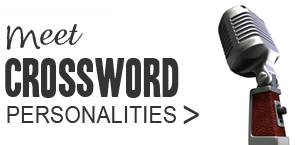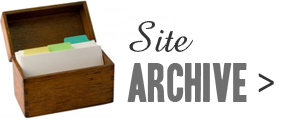
x*} for ACCLAIM, CAL(1)L<= for LILAC, or ~(tale)+SPIN for TAILSPIN. If these annotations seem confusing to you, this post will help you make sense of them.
Note that there is no universal standard/prescribed method of annotating crossword solutions; these shortcodes have evolved and come to be recognised as such through usage. So you may find variations in the way different crossword blogs – or even different bloggers on the same blog – annotate the wordplay. Some solvers might indicate reversal with <, others with rev, <- or <=: all are fine as long as readers understand what the symbol means. Crossword sites generally carry a key to the annotation format – for example, THCC displays an "Annotations" widget on the sidebar.
On Crossword Unclued, I started off with using the same annotation format as Orkut's Hindu Crossword community. With time I began to favour the simpler ( over { to demarcate parts of wordplay, and then based on feedback from a number of readers, shifted to writing more descriptive explanations for answers. This might seem like overkill to experienced solvers but then I think they can skip the details if they wish, at least the newcomers wouldn't be intimidated. These days I reserve shorthand annotations only for very simple answers or for space-constrained places like twitter. Many other crossword solvers give detailed answers as well and Big Dave's blog of tagline "crossword clues explained in plain English" fame actively avoids the use of symbols to denote clue types.
Here's a list of clue annotation formats commonly used across crossword blogs/communities.
| Clue Type | Annotation Shortcode(s) | Examples |
| Anagrams | (fodder)*, *(fodder) (FODDER)*, *(FODDER) SOLUTION* – the most compact annotation format but can be ambiguous if the anagram fodder is complex | NIE: It can't be made whole (6) INTACT (it cant)* *(IT CANT) INTACT* |
| Homophones | SOLUTION~homophone word/phrase | NIE: Big jar say (5) GREAT GREAT~grate |
| Hidden Words | [T] – from the term 'telescopic clue type' popular on Hindu Crossword forums in <fodder in lowercase with hidden answer in uppercase> | NIE: Does nothing and some did less! (5) IDLES IDLES [T] in 'dID LESs' |
| Deletions | {-letters to be deleted}LETTERS RETAINED [letters to be deleted]LETTERS RETAINED | NIE: The endless hurry that gets the bird (6) THRUSH TH{-e} RUSH TH[e] RUSH TH |
| Charades | blank spaces + , or – between charade components {} brackets around charade components | NIE: A note to finish a list of things to be done (6) AGENDA A G END A A+G+END+A A,G,END,A A-G-END-A {A}{G}{END}{A} |
| Substitutions | FODDER - [letters to be removed]+[letters to be included] | Times 25081: Fellows drop English for hard science subject (5) MATHS MATES – E + H |
| Containers | ( ) or { } | NIE: Attest to a very absorbing Kipling poem (6) VERIFY VER(IF)Y VER{IF}Y |
| Acrostics | Letters written out with spaces: X Y Z Initial letters in uppercase, the rest in lowercase | Times 25015: Recess starting as parliamentary session ends (4) APSE A P S E A[s] P[arliamentary] S[ession] E[nds] |
| Reversals | < <- <— <= rev | NIE: Send money or return the watch (5) REMIT TIMER< TIMER<- TIMER<— TIMER<= (TIMER)<— {TIMER}<= TIMER rev |
| Letter Sequences | Selected letters in uppercase, the rest in lowercase | Times 25341: Artiste was regularly disorientated (2,3) AT SEA ArT iStEwAs |
| Letter Shifting | Fodder with letters to be shifted highlighted –> solution with letter shifted highlighted | Times 24375: Ruler in a mess having succeeded much earlier? (4) SHAH HA{S}H –> {S}HAH |
| Letter Exchange | Fodder with letters to be exchanged highlighted –> solution with letters exchanged highlighted | Times 24399: Doomed king switching sides? True (4) REAL {L}EA{R} –> {R}EA{L} |
| Double Definitions | [2] dd [DD] For multi-definition clues, the shortcodes would be [n] for n definitions, md or [MD]. | NIE: Experience discrimination (8) TASTE TASTE [2] TASTE dd TASTE [DD] |
| Cryptic Definitions | [CD] cd | NIE: The dotty type (7) BRAILLE BRAILLE [CD] BRAILLE cd |
| Cryptic Double-Definitions | d&cd or cd&d, depending on whether the cryptic half is to the right or to the left in the solution | NIE: Break one's nose perhaps (8) BREATHER BREATHER d&cd |
| Palindromes | ->SOLUTION<- | NIE: It moves the helicopter backwards or forwards (5) ROTOR -> ROTOR<- |
| &lit | Clue type annotation followed by "&lit" or "all-in-one" | NIE: A drink in the late afternoon (3) TEA TEA [T] &lit |
Combining Annotation Shortcodes
These symbols work as building blocks to annotate complex clue types. Brackets may be included as separators between wordplay components and these have the same function as in BODMAS – they ask you to process whatever is inside first.
NIE: Young insects raised up on pea soup (5) PUPAE; UP< (PEA)*
FT14121 (Alberich): Teacher nets about a million? That’s very unlikely! (5,2) DREAM ON; D(RE+A+M)ON
Everyman 3450: A bad-tempered moment reportedly caused by puzzle (8) ACROSTIC; A+(CROS TIC [~(cross tick)])
Related Posts:
- Tackling Cryptic Crosswords: 7-Step Guide for Beginners
- Want Help Deconstructing Clues?
- FAQ about Crossword Unclued
If you wish to keep track of further articles on Crossword Unclued, you can subscribe to it in a reader via RSS Feed. You can also subscribe by email and have articles delivered to your inbox, or follow me on twitter to get notified of new links.








 Follow on Twitter
Follow on Twitter Join us on Facebook
Join us on Facebook Get RSS
Get RSS

4 comments
Short and sweet codes ! But I am the lazy type. For deletion, I prefer to use lower case instead of strike-through.
I'm pleased to read that you are a convert to explaining clues in plain English, Shuchi.
I am convinced that the use of gobbledegook deters less-experienced solvers from following some of the blogs, with or without a key to explain them.
Personally I prepare my blogs in Word and use AutoCorrect to expand anag into anagram of, cdf into cryptic definition, etc. thus removing the need for shortcodes.
While most newspapers in the UK and other countries carried only the solution grid, some newspapers using probably syndicated crosswords began carrying annotated solutions. So also some book collections of crosswords that carried the solution not in grids but in run-on paragaraphs.
But these were quite basic, mostly using hyphens for word separations, asterisks for anagrams and daggers for hidden.
It is only the emergence of the Internet and blogs that gave room for more detailed annotations using a variety of devices that you have noted above. And it is these that started using some classifications of clue types such as DD or CD or &Lit ("all in one" as Big Dave the demystifier would call it).
Before the blogs, crossword manuals, published after the advent of computers and facility (and felicity) in using different fonts, special characters and colour, carried annotations more elaborately. Perhaps the earliest example is The Express on Sunday: Complete Guide to Cryptic Crosswords by J. A. Coleman (Brockhampton Press, 1994).
Now it is the Guardian Crossword Blog that goes the whole hog in printing the annotations (with colour variation).
For reversal I use <-> after the answer-word (thus: ROTOR <->) as it follows the pattern of the anno following the solution.
For THC I think I take credit for introducing annotations in the now-defunct Yahoogroups: The Hindu Crossword – a practice I followed in the Orkut group on the same crossword.
Many solvers admitted that their solving prowess improved vastly as the annos indicated how the answers were derived.
In case of annotation for deletion, a la TH[e] RUSH, the problem comes in case of the letter L. When we put it in lower case as [l], there is possibility of it being mistaken for upper case I.
Post a Comment